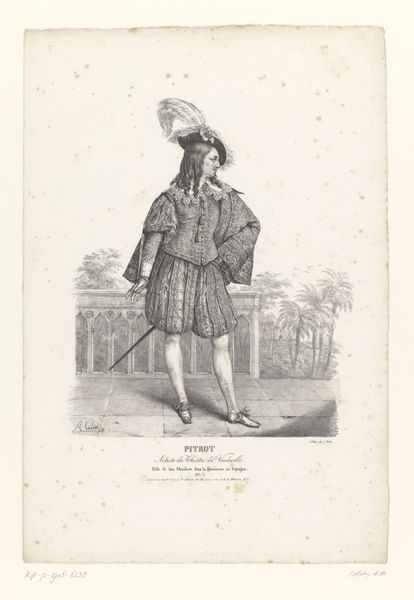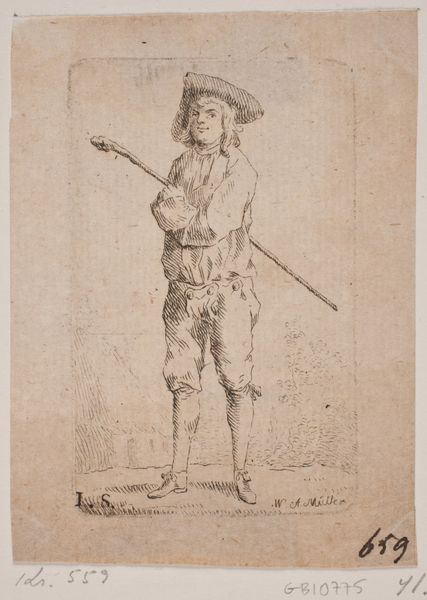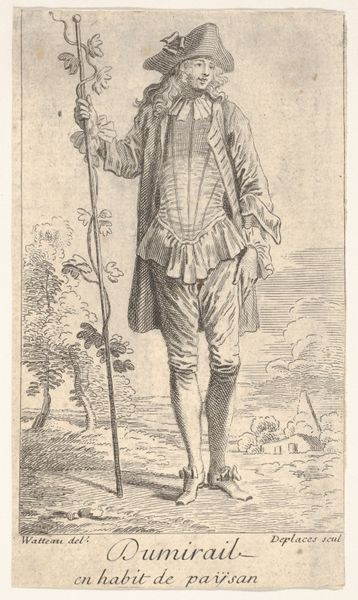
Portret van Louis Féréol als Charlot in de opera Le Solitaire 1823 - 1824
0:00
0:00
print, engraving
#
portrait
# print
#
romanticism
#
genre-painting
#
history-painting
#
engraving
Dimensions: height 420 mm, width 288 mm
Copyright: Rijks Museum: Open Domain
Editor: We're looking at Alexandre-Marie Colin’s print, "Portrait of Louis Féréol as Charlot in the opera Le Solitaire", created around 1823 or 1824. It’s an engraving that depicts a performer in costume against a landscape backdrop. It feels very staged, almost like a promotional image. What stands out to you about it? Curator: What I find fascinating is how this portrait reflects the burgeoning star system in early 19th-century opera and theatre. This isn't just a portrait of Louis Féréol; it's a deliberate construction of his public image tied to a specific role, Charlot from "Le Solitaire". Consider how this print, likely mass-produced, functioned to disseminate Féréol's image and promote the opera itself. It really highlights the intersection of art, entertainment, and commerce. Why do you think the artist chose to portray Féréol in costume, against this outdoor setting? Editor: Maybe it's trying to elevate the status of the performer, associating him with a sort of romantic heroism suggested by the landscape. As if he's not just an actor, but a character of historical importance. Is that reaching too far? Curator: Not at all! Romanticism often sought to find the epic in everyday life, and figures like Féréol, through their stage personas, could become embodiments of cultural ideals. Prints like this helped construct and circulate those ideals. The opera's success also rested on creating memorable, visually appealing figures, so the dissemination of imagery was a key element in cultivating both the opera’s, and Féréol’s, popularity. What do you make of his posture and expression? Editor: He looks confident, almost aristocratic despite the theatrical costume. It makes you wonder how audiences perceived performers and the roles they played. This piece really does show how image and fame worked even back then. Curator: Precisely. It reminds us that even seemingly simple portraits can offer complex insights into the social and cultural forces at play in a specific historical moment. I've learned to appreciate the marketing value and publicity it represents.
Comments
No comments
Be the first to comment and join the conversation on the ultimate creative platform.













